The capture of Vyborg and Kexholm. Operations of the Russian army on the Karelian Isthmus
The need for the Vyborg operation stemmed also from the international obligations of the Russian state. According to a treaty of alliance with Denmark, which was concluded in October 1709 of the year, Russia pledged to launch an offensive in Finland and take a “strong city”. Denmark, for its part, pledged to attack the Swedes in Skonia (the southern region of Sweden). The Danish command fulfilled its commitment - an 15-thousand squad was landed in Skonia. The Danes occupied the city of Helsingborg, but soon the Swedish general Steinbock defeated the Danish forces and forced them to leave Sweden. In 1710, the Danes planned to close the Swedish fleet at its main base, Karlskrona, with the start of navigation, but they could not organize a blockade. Peter, who was distinguished by the breadth of strategic calculations, suggested to the Danish command that the Danish Naval Forces be advanced to Kronslot and, having joined them with the Russian squadron, to give open battle to the Swedes. The combined naval forces of Russia and Denmark could have established themselves on the Aland Islands and landed troops at Stockholm. But the fleet of the Danes in battle 23 September 1710, was defeated and ceased active operations.
It should be noted that the Russian army made the first attempt to capture Vyborg back in 1706 year. Peter I wanted to protect his offspring - St. Petersburg, laid down in 1703, at the mouth of the Neva River, and attempted to deprive the Swedes of a sea and land base. The Swedes made several attempts to make an attack on Petersburg from the northeast direction. October 11 1706, taking advantage of the fact that Karl XII with the main forces of the Swedish army withdrew to Saxony, Peter with the 20 ths. Army advanced to Vyborg. Swedish fortress defended 3-x thousand garrison under the command of General Meidel. Without having complete information about the location of Vyborg, the Russian tsar did not bother bringing the fleet ships to the city, which were necessary for the complete blockade and attack of the fortress, partially located on the island. Peter, having conducted reconnaissance, realized that Vyborg could not be taken. Therefore, despite the fact that the engineering work began immediately upon arrival at the fortress, and 22 - 26 of October was bombarded by the fortress, Peter, not waiting for an assessment of the results of the shelling, ordered to remove the siege of Vyborg. In the coming years, he planned, based on the information obtained in this campaign, to make a new siege of the city.
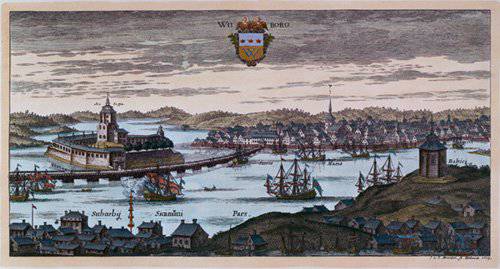
Vyborg in 1709 year.
Siege of Vyborg 1710 of the year
4 (15) February, Peter, in a letter to the Russian ambassador in Denmark, V. L. Dolgoruky, ordered the Danes to be informed that the blockade operation on Vyborg would be launched this winter, and an assault on spring.
Vyborg is located in the depths of the bay on the Karelian Isthmus and was inaccessible to land forces. Almost from all sides the city is surrounded by the waters of the Vyborg Bay and the Suomen-Veden-Selka lake. On the islet there is the Vyborg castle, which the Swedes built at the end of the 13 century, with the powerful Langerman tower with a height of 50 meters. The fortress itself consisted of two parts: the Stone Town and the New Town. The stone city was an old stone fortress built in the Middle Ages. A new (earthen) city began to be built under King Gustav-Adolf in the 17 century. For the attack from the land, only the eastern part of the New City, facing St. Petersburg, was available. Its fortifications were a solid bastion front with ravelins. From the sea and from the north-west side the city was protected later. The defensive fortifications of Vyborg met the requirements of the long-term fortification of that time. It was one of the most powerful fortresses in Sweden. Its garrison consisted of up to 4 thousand people with 141 gun, 8 mortars and 2 howitzers. From the sea, the fortress could support the Swedish Navy. The commandant of the fortress was Magnus Shernstrole (Steerstrole). It was extremely difficult to take this fortress, this required thorough and thorough preparation.
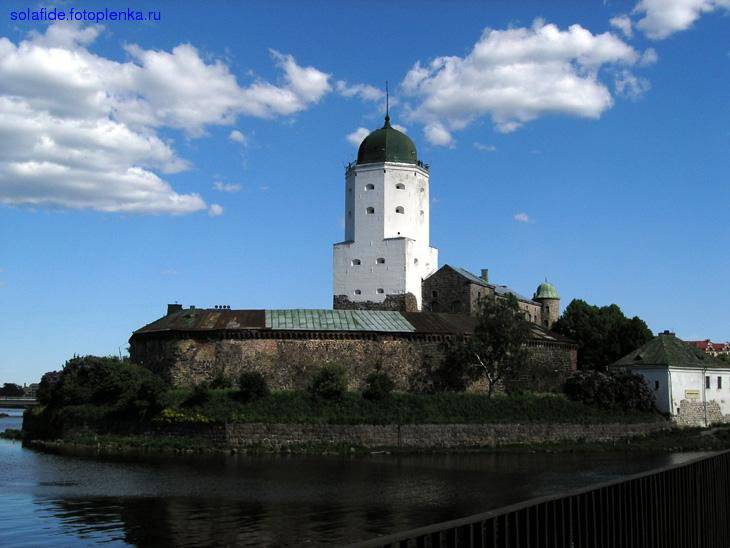
Vyborg Castle.
In early December 1709, Peter sent General Admiral Fyodor Matveyevich Apraksin personally drafted a campaign plan for Vyborg. They were going in March 1710 of the year to make the transition of Russian troops on the ice of the Gulf of Finland to Vyborg and suddenly besiege it. The Baltic fleet, with the start of navigation, was to supply the besieging army with ammunition, food, and lift additional guns. In St. Petersburg began to prepare the siege corps, artillery, supplies. At the end of February, Peter arrived from Moscow to St. Petersburg and found preparations for the march in full swing. A separate plan for the campaign of the Russian fleet to Vyborg was drawn up. The main idea of the plan was to go all the forces of the Navy from Kronshlot to the Birch Islands (Berken-Yilant) by opening the ice to all the forces of the Navy. The Russian command was going to get ahead of the Swedish Navy.
By mid-March, parts of the siege corps were concentrated in Kotlin. The hull had 13 thousand, 24 guns and 4 mortars. The army was headed by Fedor Apraksin. 15 (26) March Peter inspected the troops and the campaign began the next day. According to the Danish envoy, Yust Julia, the Russian troops acted in “the most terrible frost” in which another European army would simply die. But, "Russians are so hardy that it is possible to do with them what would seem impossible for the soldiers of all other nations." In the morning of March 21 (April 1) the Russian army, having passed over the ice of the Gulf of Finland more than 150 versts, suddenly appeared for the Swedes in Vyborg. The first to reach the city was the avant-garde, commanded by G. P. Chernyshev. The Russian troops, taking advantage of the effect of surprise, immediately seized the suburb, knocking out two Swedish regiments, which retreated into the fortress. The Russian forces also captured three ships that had been hibernating in Vyborg. March 22 (April 2) came under the command of R. Bruce and V. Berkholts. Capturing the outskirts of Hietal allowed the siege corps troops to approach directly to the fortress from the strait and island castle. After the exploration, Apraksin determined the location for the troops and the engineering work. In 12 versts from Vyborg at the narrowest point of the Trongzund strait, they decided to build two trenches, place two battalions of soldiers there and arrange artillery batteries to prevent the Swedish ships from breaking through to the besieged fortress. Russian forces were located along the entire west bank against the fortress walls and began engineering work. But severe frosts and stony ground greatly hampered the siege work. On this side, Russian forces were led by General Bruce. On the east side led troops Berkholts. As a result, Vyborg's message with the Swedish territory was interrupted - the garrison was cut off from parts of General Lübecker, who wintered in Finland. The first stage of the Vyborg operation - a difficult and dangerous transition on the ice of the Gulf of Finland and the imposition of taxes on Vyborg - was successful.
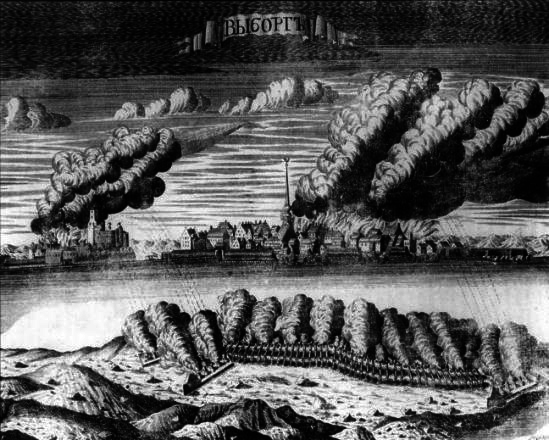
Siege works were conducted at a good pace, despite the opposition of enemy artillery and winter conditions. By the end of March, the troops completed the construction of trenches and began to build batteries. March 30 (April 11) the first shells flew into the fortress. The main direction of the future attack chose the western wall. Battery No. 1 (several field guns and 3 mortars) were erected on the western front of the attack, and battery No. 2 (field guns) on the east. The problem was that the siege corps did not have large-caliber guns, besides, the garrison was superior to Russian artillery among the guns. The problem of supplying troops with food and fodder also arose, the reserves taken with them came to an end, and it was not necessary to count on local resources. The troops were waiting for the arrival of the Baltic Fleet ships.
The Baltic Fleet has already completed preparations for the march. The ships were loaded with reinforcements, guns for the siege hull, supplies. In total, the campaign was supposed to take part up to 250 ships and vessels of different types. Waited for an ice drift on the Neva, it began on April 13 (24). 25 April (6 May) fleet under the command of Vice-Admiral Cornelius Cruys (Russian admiral of Norwegian origin) and Rear Admiral Peter ("nobleman Peter Mikhailov"), chief of the rowing fleet Ivan Botsis left St. Petersburg. Arriving at Kronshlot, Peter sent two shnyavas for reconnaissance. 30 April (May 11) followed by the entire fleet. But soon the commanders of the reconnaissance ships reported that it was impossible to go to the Birch Islands, the ice had not yet opened. Peter personally went to the new ice reconnaissance, she confirmed that the ice between the mainland and the Birch islands had not yet been revealed. 1 (12) in May galley fleet and provisional vessels could hardly approach the Kuroma tract in 6 miles from the Birch islands. Big ships came later, waiting for the improvement of the ice situation. The 6 (17) of May began the movement of ice: galleys and transport ships were separated from the large ships by ice, they began to be carried to the sea. There was a threat that 5, thousands of recruiters, siege artillery, supplies and ships would be lost. At an emergency meeting, Peter proposed to break through the ice with the hulls of the most powerful ships and bring the captive ships to open water. Several of the largest ships of the Baltic Fleet, acting as icebreakers, freed galleys and transports. Only a few ships were lost.
8 (19) May the fleet was able to move to Vyborg. Cruise with the ship fleet remained at the Birch Islands. In the evening, the galleys and transports were near the city. Several guns were unloaded, which strengthened the position at the narrowest point of the Trongzund Strait. The fleet arrived quite on time, the food near the siege corps was almost over. In addition, the number of the siege corps increased to 18 thousand people, 80 guns, 28 mortars and 190 manual mortars, ammunition, various ammunition were brought.
While there was an unloading of troops weapons, supplies. Peter conducted a reconnaissance of the area, and in the course of discussing the situation with Apraksin, he compiled a manual for “extracting Vyborg.” The plan provided for the main attack from the west, and the auxiliary from the east. The galley fleet of Botsis was left to help in the siege of the fortress, and the ship and transport fleet went to Petersburg. Thus, the Baltic Fleet fulfilled its task - it enhanced the offensive capabilities of the siege corps. The Swedish Navy could not prevent this - the 19 of the Swedish ships appeared on the birch islands only on 18 (29) of May, when the Russian ships were already in St. Petersburg. Swedish ships failed to assist the Vyborg garrison: their draft did not allow them to pass through the skerries, and the channel of the Strongsund Strait was closed by artillery and several submerged transport ships (they were ordered to drown Peter). The Swedish admiral Gustav Vatrang (Wattrang), not having the opportunity to attack Russian positions, was forced to limit himself to cruising in the Gulf between Kotlin and Vyborg.
At this time, Apraksin intensively preparing for the assault on the fortress. For siege artillery built batteries. Most of the troops, 72 cannons, 18 mortars and 140 mortars, were concentrated on the main line of attack. By the end of May, preparations for the decisive bombardment and assault were completed. They prepared two floating bridges, the galley fleet also had to take part in the assault. Apraksin suggested that the Swedish garrison capitulate without waiting for the atrocities of the assault and bloodshed. The Swedish command responded with a categorical refusal. From 1 (12) to 6 (17), June was under heavy shelling of the fortress. Fires started in the city, many buildings were destroyed, on the main direction, from the side of the strait, a breach was made. The Swedes tried to repair the breach, but the strong fire of the Russian artillery prevented it from doing so. 6 (17) June at the military council, it was decided to start the assault, but at the request of Peter it was postponed until his arrival. In the evening of June 9 (20), the commandant of the fortress sent two officers to start negotiations on the surrender of Vyborg. The 12 (23) June agreement on the surrender of the city was signed. 13 (24) June, the garrison of Vyborg surrendered, the next morning, Peter solemnly entered the city at the head of the Preobrazhensky regiment.
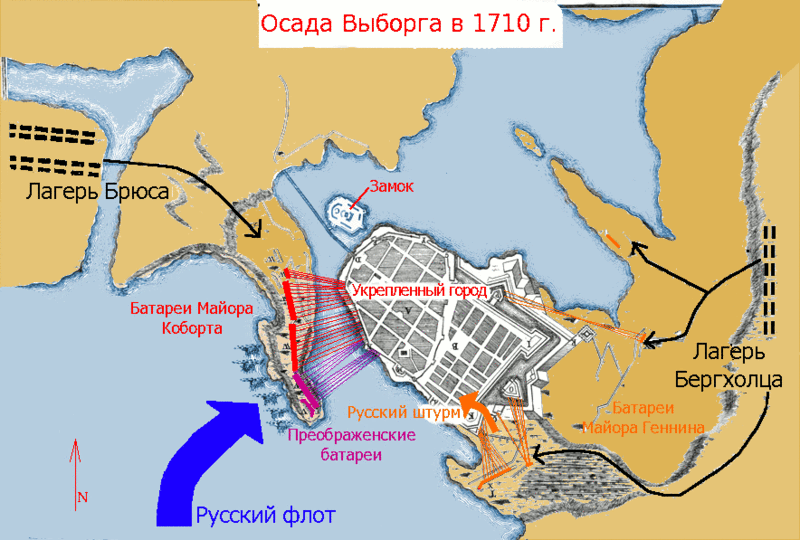
The winners got a strong fortress with rich reserves of gunpowder and shells. 141 cannon, 8 mortars, 2 howitzers, 5,5 thousand guns were captured. 3380 man was taken prisoner. Initially, they agreed to let go, but Peter ordered the Swedes to be detained. The Russian tsar was irritated by the actions of the Swedish government, which did not alleviate the plight of Russian prisoners of war and did not fulfill the conditions for the exchange of generals and the release of the Russian ambassador, Prince Khilkov, while the Swedish ambassador was released.
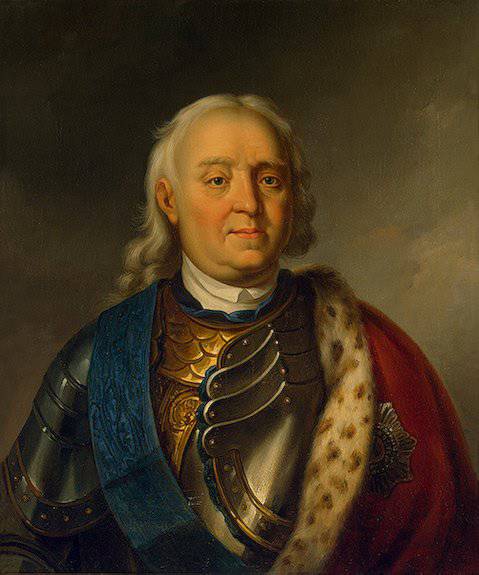
Fedor Matveyevich Apraksin.
The capture of Vyborg was magnificently celebrated. The participants of the march and siege were generously rewarded. Apraksin was awarded the Order of St. Andrew the First-Called, major generals Bruce and Berkholz received royal chest portraits decorated with precious stones, officers and soldiers were rewarded with money. In memory of the capture of the city of Vyborg, a medal was knocked out, and the Trinity Cathedral was founded in Petersburg. Peter attached great importance to the capture of Vyborg. In a series of letters, he emphasized: “And through the capture of this city of St. Petersburg, the final security was obtained”.
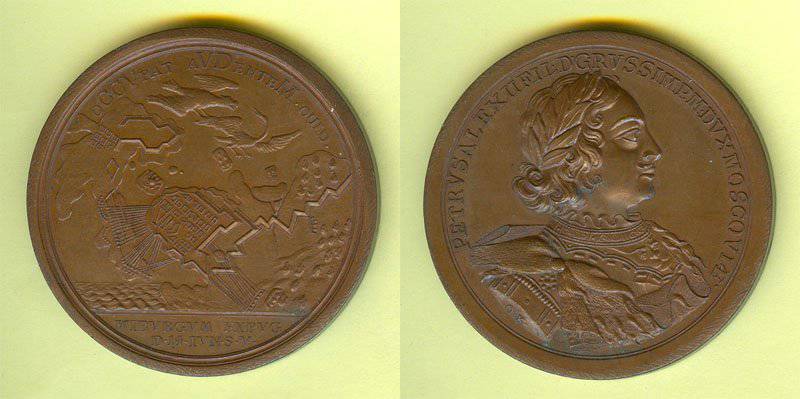
Medal in honor of the capture of Vyborg.
Taking Kexholm
After Vyborg was captured, Peter I sent part of the siege corps as part of the 3's dragoon and 2's infantry regiments, as well as the 2's grenadier companies under the command of Major General Bruce to Kexholm with the order: to attack in order not to lose people for free. ” It was the ancient Russian fortress Korela built at the turn of the XIII and XIV centuries by the Novgorodians on the island of the Userve River (Vuoksa) to protect the north-western borders of the Novgorod land from the Swedes. Sweden received this fortress after the Russian Time of Troubles of the beginning of the 17 century. The fortress was located on one of the islands of the river Vuoksa, near its left bank. Kexholm possessed small, irregularly shaped bastions. The front of the fortress, facing the left bank of the river, defended the river arm, which served as a moat. On the shore opposite the southern front of the fortress there was a redan, which served him as a ravelin and covered the bridge over which Kexholm communicated with the left bank. The northern fronts of the fortress were strengthened by temporary fortifications. The neighboring, smaller island was occupied by a separate citadel, which was connected to the fortress by a bridge. Another 3 islands were fortified by lunettes.
8 July 1710, the Russian squad, approached the Vuoksa River. The next day, Russian troops crossed the river and besieged Kexholm. July 10 began engineering work. Russian soldiers built approaches and erected artillery positions. Siege works were completed by July 15, and at the same time shelling of the fortress began. On July 21, reinforcements and a new artillery battery arrived from Olonets. At the same time, a redoubt was taken opposite the castle. On August 3 from Shlisselburg, the siege detachment was strengthened by water. 7 August began shelling Kexholm from mortars. On the same day, an island was seized opposite the western front of the fortress. On September 4, the Russian artillery park was even more reinforced, which made the Swedish commandant of the fortress, Colonel Sherntants agree to surrender. As a result, after two months of siege - 8 September, Kexholm capitulated. A garrison with personal weapons, but without banners was released. 55 cannons were captured.
The taking of Vyborg and Kexholm was of great strategic importance - security from the northeast direction for St. Petersburg was ensured. The Swedes lost support bases for the offensive operations of the army and navy and for the defense of their lines. A new base was obtained for the Baltic Fleet and for an offensive in Finland. Russia returned a number of its ancient territories.
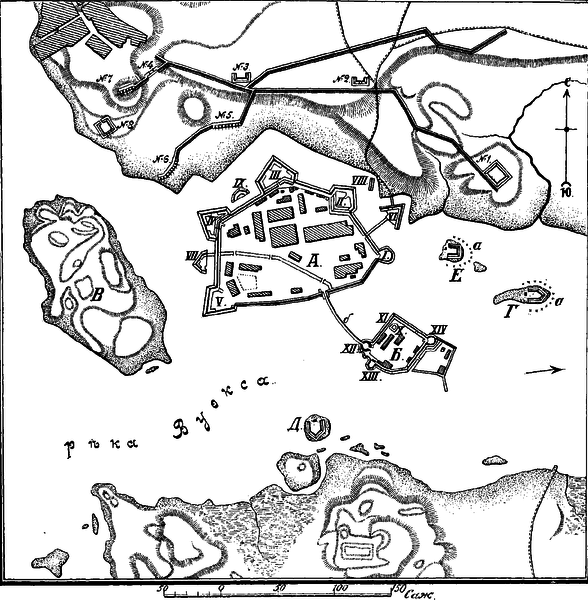
Siege of Kexholm.
Information